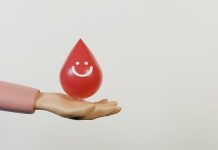
Large quantities of rich Christmas food appear to boost cholesterol levels.
Right after the Christmas break, levels are 20% higher than in the summer.
This is the finding of a new study carried out by researchers from the University of Copenhagen.
All that butter and cream in Christmas food may possibly boost cholesterol levels more than assumed up to now.
The new study involved 25,000 participants, and it shows that the risk of having elevated cholesterol is six times higher after the Christmas break.
“Our study shows strong indications that cholesterol levels are influenced by the fatty food we consume when celebrating Christmas.
The fact that so many people have high cholesterol readings straight after the Christmas holiday is very surprising,” says Dr. Anne Langsted, M.D., who is one of the authors of the article.
Nine out of ten of the people participating in the so-called Copenhagen General Population Study had elevated cholesterol after Christmas.
People who already have high cholesterol should perhaps be even more alert to their cholesterol levels during the Christmas holidays.
“For individuals, this could mean that if their cholesterol readings are high straight after Christmas, and they could consider having another test taken later on in the year,” says another of the article’s authors, Dr. Signe Vedel-Krogh, M.D.
“In any event, there is a greater risk of finding that you have elevated cholesterol if you go to the doctor and have your cholesterol tested straight after Christmas.
It is important to be aware of this, both for doctors who treat high cholesterol and those wishing to keep their cholesterol levels down,” she concludes.
The article is published in the international journal Atherosclerosis.
Facts about cholesterol
If you have too much cholesterol in your blood, your arteries can get furred up and there is a greater risk of developing heart attacks and stroke.
Heart attacks and strokes are what kill most people worldwide.
Copyright © 2018 Knowridge Science Report. All rights reserved.
Source: University of Copenhagen.



